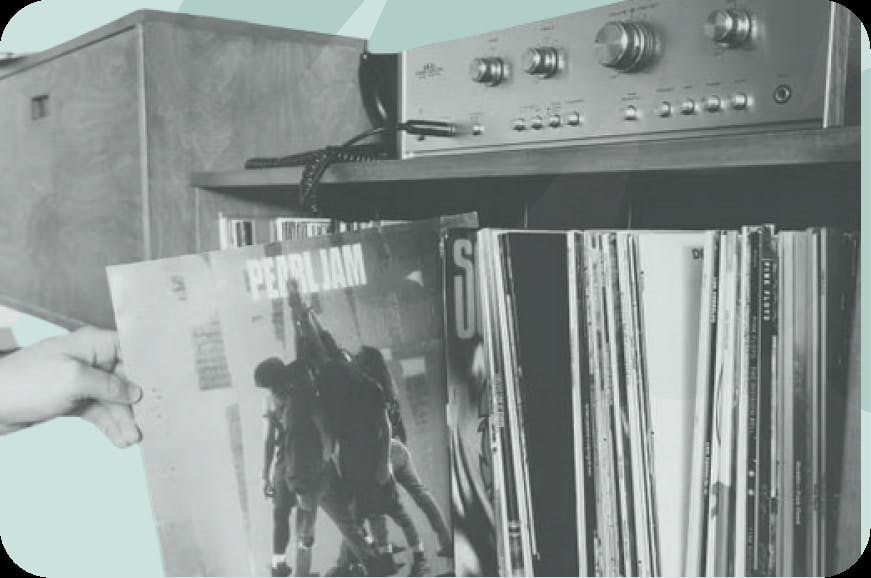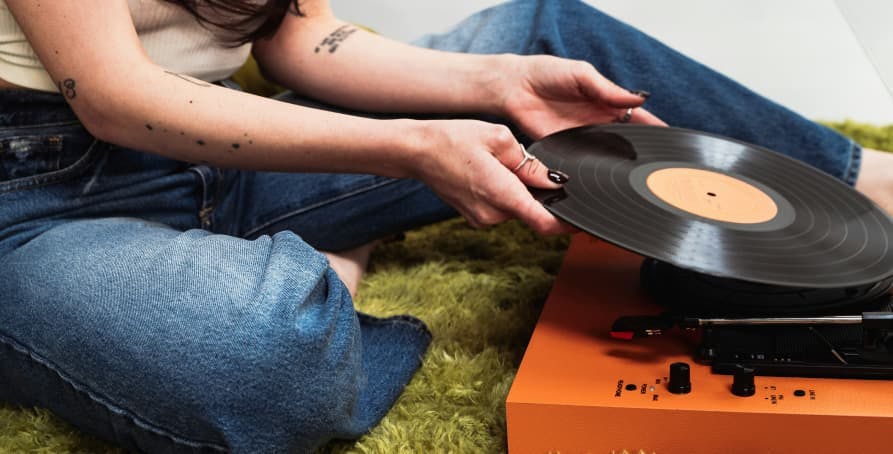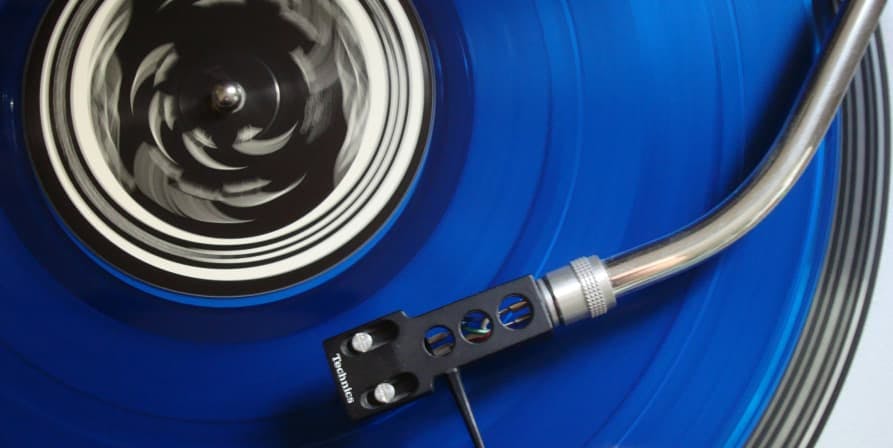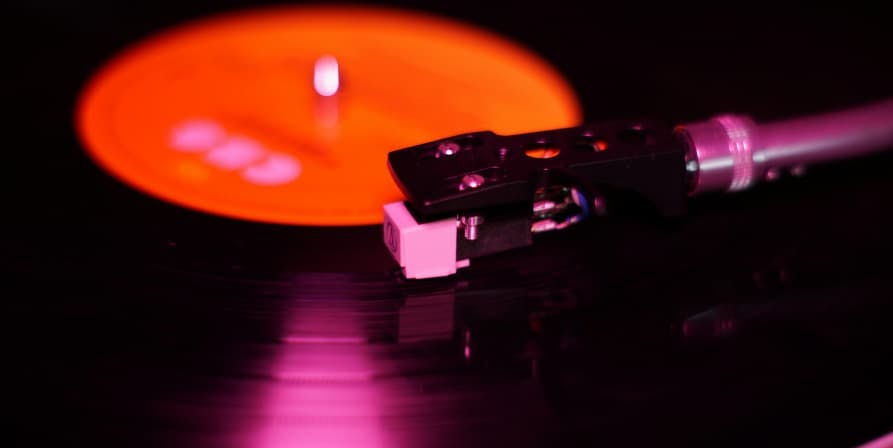ESG / CSR
Industries
Is the Return of Vinyl Records Ruining the Planet?



A vinyl record used to be the most common way to purchase and hear a new album decades ago, but clearly – almost all “retro” trends come back around – as collecting vinyl records started to grow in popularity in the mid 2010s with the return of vinyl records making a full comeback in the 2020s.
Primarily, vinyl records are being used for artists seeking to boost their commercial sales – often offering different variations of vinyl records with various hidden bonus tracks.
The vinyl record trend is great for singers looking to keep fans on their tiptoes, but is it as good for the environment?
In this article, we’ll recap the pros and cons of vinyl records, why they are bad for the environment, and what adjustments could be made to vinyl records in the midst of climate change.
What is a vinyl record?
A vinyl record is a now popular form to listen to music, and for massive fans of an artist to start a collection of their music and bonus tracks from albums. Although the start of vinyl records dates back to the 1930s, there has been a recent surge in popularity for vinyl records – with nearly 50 million vinyl records being sold in 2023 alone.
💡 Vinyl records have exploded in popularity, with reports revealing that the vinyl record industry is helping the United States to generate $467 million dollars in retail revenue and with a staggering 94% increase in vinyl record purchases in 2021 alone!
In fact, prior to MP3 players, CDs, and streaming – a vinyl record was the most desired way to listen to music – as vinyl records provide a nostalgic and earnest feel to music that cannot be replicated with modern media.
A vinyl record, which is made out of polyvinyl chloride (PVC), works seeing as small micro-grooves are imprinted on the record itself. Then, once the vinyl record is spinning on the record player – the ridges are then turned into sound as the needle passes over each groove.
👉 Some of the main reasons why people will opt to purchase a vinyl record over streaming music or purchasing a CD is for the improve sound quality, physical momentum, and for bonus songs that artists are often choosing to incorporate onto their vinyl records.

What are the pros and cons of listening to music on a vinyl record?
In the age of convenience, many wonder why consumers would opt for a vinyl record over streaming – as a vinyl record is arguably more difficult to transport to a beach party, use while working out, or to listen to while traveling. However, there are also several benefits to listening to vinyl records – such as improved sound quality and the ability to own a tangible momentum from the artist.
Some of the pros of using a vinyl record to listen to music include:
- Nostalgia – Everything seems to have been better before, and vinyl records certainly demonstrate the desire to regress from our modernised ways of listening to music. The thoughtful and ceremonial effort to choose a record to play on the spin table elicits a peculiar feeling for many consumers of vinyl records that cannot be replicated when listening to music digitally.
- Improved Sound Quality – Digital files are often compressed to save storage space, but vinyl records aim to keep all of the idiosyncratic sounds intact – such as the warmth of a vinyl record or the crackling in between listening to songs on an album.
- Access to Bonus Songs – These days, several artists such as Olivia Rodrigo, Taylor Swift, Maisie Peters, and more are offering exclusive tracks for fans that opt to purchase their vinyl records. Several months may pass before these exclusive songs are available on streaming, and that is if the artist ever decides to offer the song digitally.
- Support the Artist – Streaming is infamous for only paying artists a fraction of what they deserve. Therefore, purchasing a record vinyl can ensure that more money is being directly sent to the artist you’d like to support.
Some of the cons of using a vinyl record to listen to music include:
- Lack of Portability – Unlike a CD player, MP3 player, iPhone, or even a Walkman from the 1980s – a vinyl record cannot be played on-the-go the way other music players can.
- Physical Damage – A vinyl record can easily be broken or scratched, meaning that waste is more likely to be generated with vinyl records as streaming services themselves will never need to be physically replaced.
- Storage Space – Massive music fans these days like to create a wall honoring their favorite artists, such as by hanging up their vinyl records – but people who live in smaller houses or apartments may find it challenging to allocate space for a record player and subsequent vinyl records.
- Extra Attention to Take Care of Vinyl Records – Unlike an iPhone or iPod which uses streaming services or downloaded files to play music, a vinyl record may need to be cleaned and properly stored to ensure the sound quality is preserved.
👉 Overall, the choice to purchase a vinyl record will ultimately come down to personal preference and the way in which each person prefers to listen to music – on the go, or at home.

Why are vinyl records bad for the environment?
In the past decade, but especially in the past few years in accordance with Taylor Swift and other popular artists releasing bonus tracks onto vinyl records – the return of vinyl records has demonstrated how over consumption is one of our biggest challenges in the fight against climate change.
In addition to this, a whopping 50% of Americans that opt to purchase a vinyl record don’t even own a record player in their own home. Sure, the vinyl record can serve as a momentum from the artist’s musical era – but purchasing something that can’t be used further illustrates the issues we are having with over consumption and its relationship to climate change.
Here are some additional reasons why the return of vinyl records may be ruining the planet:
- Plastic Packaging – Vinyl records are larger than CDs, meaning that more single-use, non-biodegradable plastic packaging is required to cover the exterior for the vinyl record. In addition to this, artists will often include several extras inside the vinyl record, song lyric booklets or photographs, that some fans may end up throwing away instead of recycling.
- Excess Consumerism – Many popular artists today release exclusive tracks on individual vinyl records, which only promotes the over consumption of single-use plastics and potential waste generation.
- Production of Vinyl Records – Over consumption of vinyl records isn’t the only threat vinyl records pose to the planet, but the production of vinyl records themselves. This is because polyvinyl chloride, or PVC (the main component used to make a vinyl record) isn’t eco-friendly as it can end up in the ocean and even compromise human health. In addition to this, the process to create a vinyl record is energy intensive – as it requires multiple stages of heating and pressing the vinyl to create solid sound grooves.
💡 Did you know that vinyl records produce 1.9 thousand tons of carbon dioxide for every 4 million records produced? With nearly 50 million vinyl records sold in 2023 alone, this means that vinyl records produced around 23,750 tons of carbon dioxide emissions.

What adjustments could be made to a vinyl record to make it more eco-friendly?
There are several ways in which we could make vinyl records more sustainable, and some artists are already taking action – such as Billie Eilish, who is making an effort to use sustainable packaging materials and recycled or eco-vinyl for her vinyl records.
Many believed that Eilish was referring to Taylor Swift, who has released five vinyl record variations for her 1989 and The Tortured Poets Department, as Swift recently hit billionaire status late late year – many are starting to recognise the possible capitalist endeavors she has taken to both make money and keep her songs on the Billboard Hot 100 charts.
For instance, Swift’s most recent album, The Tortured Poets Department, was available in five different variations – with each variation to include a different bonus song, available for pre-order. These variations each included one additional song, such as “The Bolter”, “The Albatross”, “The Black Dog”, and “The Manuscript”.
However, shortly after the album’s release – Swift revealed that The Tortured Poets Department was a double album, with many of the bonus songs that fans purchased a vinyl record with the intent to listen to “exclusively” being made available immediately on streaming.
👉 Remember, the carbon impact created by streaming music or listening on a vinyl record is bound to vary depending on the listening time – meaning it’s important for us to try and make all ways of listening to music more sustainable.

What are other ways to listen to music without harming the planet?
All platforms used to listen to music have their pros and cons, but it's true that more sustainable ways to listen to music may exist as opposed to listening on a vinyl record while still provoking the nostalgia that comes with the experience of playing vinyl record – such as with CD players or cassette tapes.
Here are some other ways to listen to music without needing to buy a vinyl record or a turntable:
- Streaming – Although streaming comes with its own carbon footprint predicaments, as popular songs such as Olivia Rodrigo’s, “Driver’s License” generated enough streams to create the annual amount of carbon dioxide emissions produced by 500 people in the United Kingdom – streaming remains a viable way to prevent excess consumerism in the music industry.
- Cassette Tapes – Similar to a vinyl record, a cassette tape can help to evoke the nostalgic element often emanated while playing a vinyl record. However, cassette tapes haven’t made the same resurgence yet as vinyl records – and may prove challenging to find contemporary albums on tape.
- MP3 Player – This form of listening to music has yet to come back around, but it could – as it evades the carbon footprint created by streaming and also provokes the same nostalgia as a vinyl record.
- CDs – While CDs also use single-use plastic packaging and come in a plastic container themselves, the main difference between a vinyl record and a CD is that music from a CD can be copied onto a digital device such as your computer or MP3 player. This allows you to listen to music both digitally and “ceremonially” via a boom box or CD player the same way you would with a vinyl record and a turntable.
Overall, vinyl records aren’t ruining the planet at this very moment – but their potential environmental impact is evident, and they could overtime if over consumption continues to be encouraged. Therefore, it’s up to both artists and consumers to demand and find new solutions to make this romantic way of listening music more sustainable for their inevitable future in the music industry.
What About Greenly?
If reading this article about why purchasing a vinyl record may not be the smartest choice for the planet has made you interested in reducing your carbon emissions to further fight against climate change – Greenly can help you!
At Greenly we can help you to assess your company’s carbon footprint, and then give you the tools you need to cut down on emissions. We offer a free demo for you to better understand our platform and all that it has to offer – including assistance with boosting supplier engagement, personalised assistance, and new ways to involve your employees.
Click here to learn more about Greenly and how we can help you reduce your carbon footprint.




